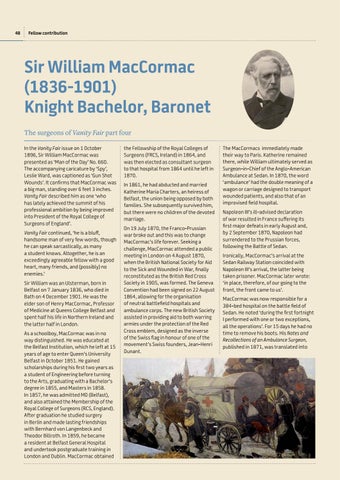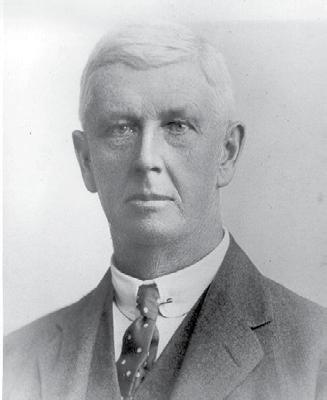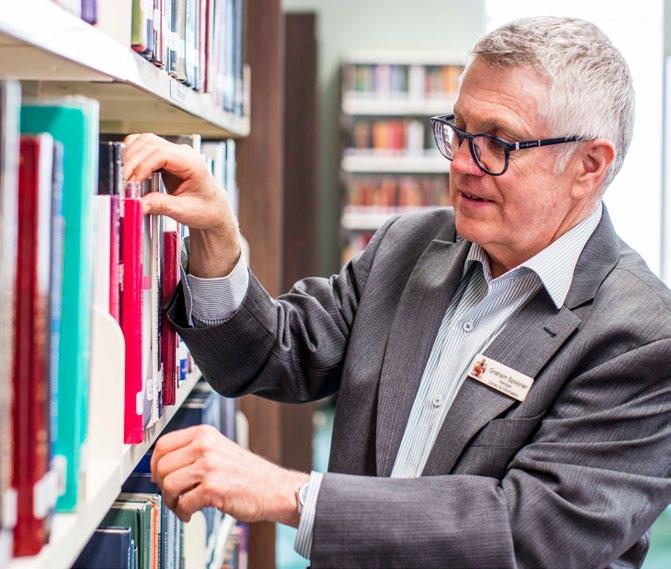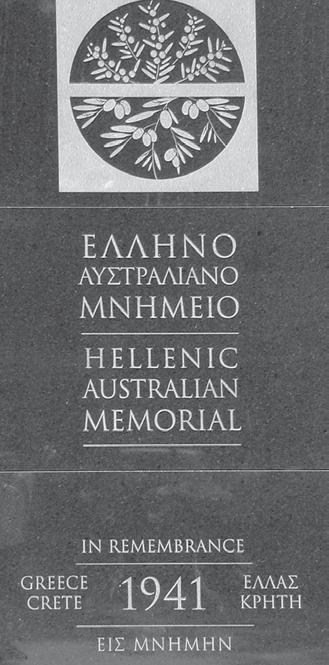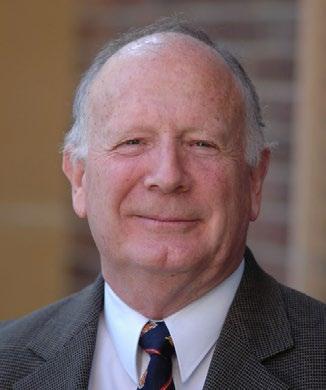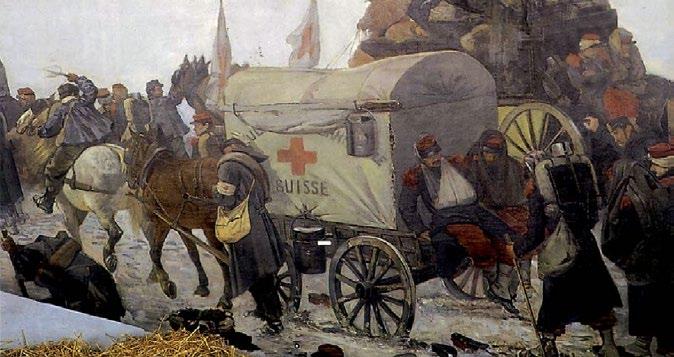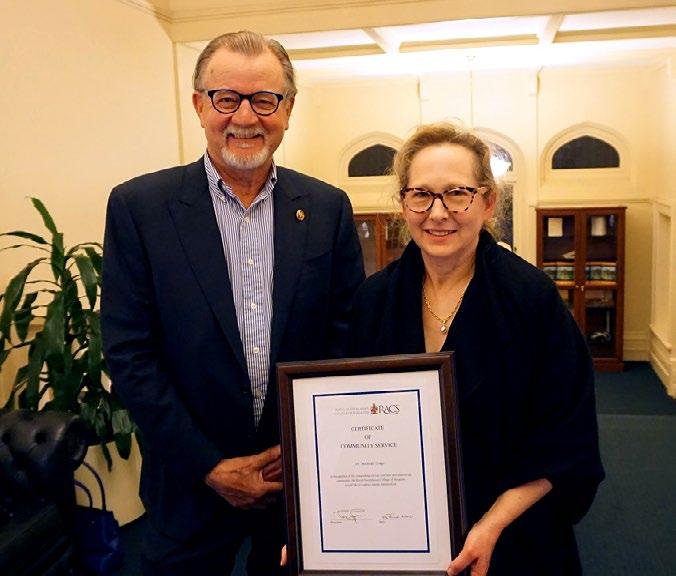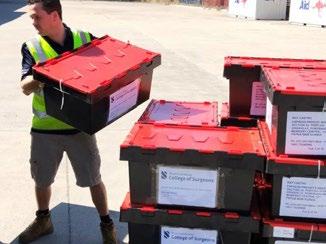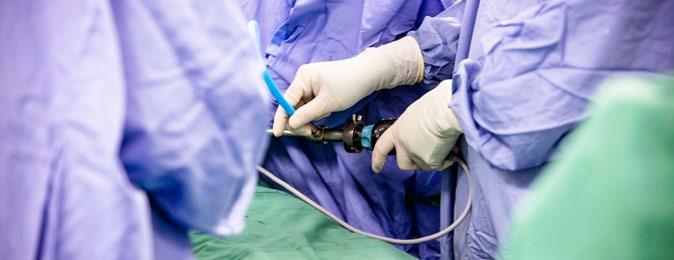48
Fellow contribution
Sir William MacCormac (1836-1901) Knight Bachelor, Baronet The surgeons of Vanity Fair part four In the Vanity Fair issue on 1 October 1896, Sir William MacCormac was presented as ‘Man of the Day’ No. 660. The accompanying caricature by ‘Spy’, Leslie Ward, was captioned as ‘Gun Shot Wounds’. It confirms that MacCormac was a big man, standing over 6 feet 3 inches. Vanity Fair described him as one ‘who has lately achieved the summit of his professional ambition by being improved into President of the Royal College of Surgeons of England’. Vanity Fair continued, ‘he is a bluff, handsome man of very few words, though he can speak sarcastically, as many a student knows. Altogether, he is an exceedingly agreeable fellow with a good heart, many friends, and (possibly) no enemies.’ Sir William was an Ulsterman, born in Belfast on 7 January 1836, who died in Bath on 4 December 1901. He was the elder son of Henry MacCormac, Professor of Medicine at Queens College Belfast and spent half his life in Northern Ireland and the latter half in London. As a schoolboy, MacCormac was in no way distinguished. He was educated at the Belfast Institution, which he left at 15 years of age to enter Queen’s University Belfast in October 1851. He gained scholarships during his first two years as a student of Engineering before turning to the Arts, graduating with a Bachelor’s degree in 1855, and Masters in 1858. In 1857, he was admitted MD (Belfast), and also attained the Membership of the Royal College of Surgeons (RCS, England). After graduation he studied surgery in Berlin and made lasting friendships with Bernhard von Langenbeck and Theodor Billroth. In 1859, he became a resident at Belfast General Hospital and undertook postgraduate training in London and Dublin. MacCormac obtained
the Fellowship of the Royal Colleges of Surgeons (FRCS, Ireland) in 1864, and was then elected as consultant surgeon to that hospital from 1864 until he left in 1870. In 1861, he had abducted and married Katherine Maria Charters, an heiress of Belfast, the union being opposed by both families. She subsequently survived him, but there were no children of the devoted marriage. On 19 July 1870, the Franco-Prussian war broke out and this was to change MacCormac’s life forever. Seeking a challenge, MacCormac attended a public meeting in London on 4 August 1870, when the British National Society for Aid to the Sick and Wounded in War, finally reconstituted as the British Red Cross Society in 1905, was formed. The Geneva Convention had been signed on 22 August 1864, allowing for the organisation of neutral battlefield hospitals and ambulance corps. The new British Society assisted in providing aid to both warring armies under the protection of the Red Cross emblem, designed as the inverse of the Swiss flag in honour of one of the movement’s Swiss founders, Jean-Henri Dunant.
The MacCormacs immediately made their way to Paris. Katherine remained there, while William ultimately served as Surgeon-in-Chief of the Anglo-American Ambulance at Sedan. In 1870, the word ‘ambulance’ had the double meaning of a wagon or carriage designed to transport wounded patients, and also that of an improvised field hospital. Napoleon III’s ill-advised declaration of war resulted in France suffering its first major defeats in early August and, by 2 September 1870, Napoleon had surrendered to the Prussian forces, following the Battle of Sedan. Ironically, MacCormac’s arrival at the Sedan Railway Station coincided with Napoleon III’s arrival, the latter being taken prisoner. MacCormac later wrote: ‘in place, therefore, of our going to the front, the front came to us’. MacCormac was now responsible for a 384-bed hospital on the battle field of Sedan. He noted ‘during the first fortnight I performed with one or two exceptions, all the operations’. For 15 days he had no time to remove his boots. His Notes and Recollections of an Ambulance Surgeon, published in 1871, was translated into
